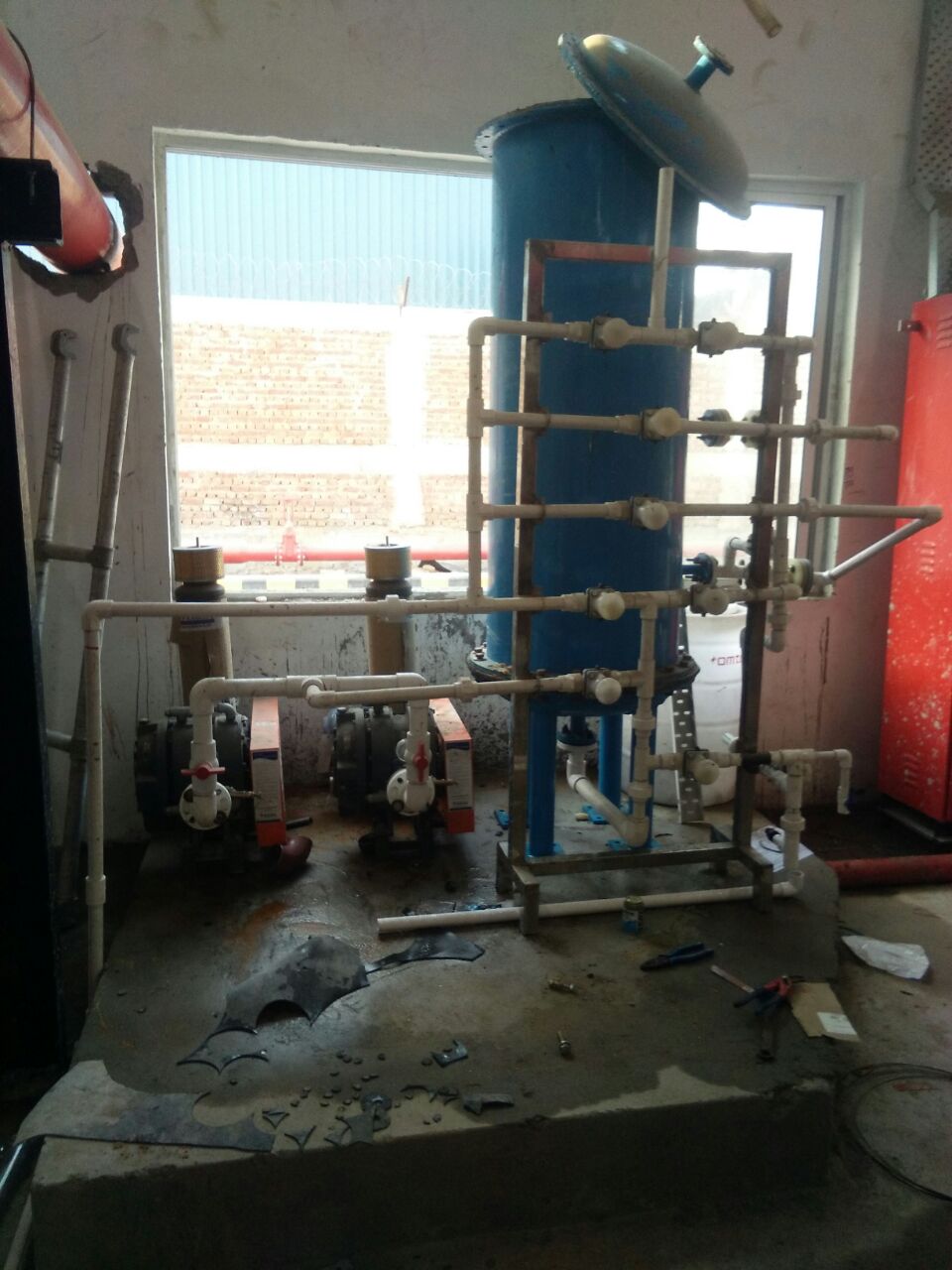MIXED BED EXCHANGER (MB)
A mixed bed exchanger has both cation and anion resin mixed together in a single vessel. As water flows through the resin bed, the ion exchange process is repeated many times, "polishing" the water to a very high purity. During regeneration, the resin is separated into distinct cation and anion fractions. The resin is separated by backwashing, with the lighter anion resin settling on top of the cation resin.
Regenerant acid is introduced through the bottom distributor, and caustic is introduced through distributors above the resin bed. The regenerant streams meet at the boundary between the cation and anion resin and discharge through a collector located at the resin interface. Following regenerant introduction and displacement rinse, air and water are used to mix the resins. Then the resins are rinsed, and the unit is ready for service.
Counterflow and mixed bed systems produce a purer water than conventional cation-anion demineralizers, but require more sophisticated equipment and have a higher initial cost. The more complicated regeneration sequences require closer operator attention than standard systems. This is especially true for a mixed bed unit.


Coagulation is the destabilization of colloids by neutralizing the forces that keep them apart. Cationic coagulants provide positive electric charges to reduce the negative charge (zeta potential) of the colloids. As a result, the particles collide to form larger particles (flocks).Coagulation, thus, implies formation of smaller compact aggregates. Rapid mixing is required to disperse the coagulant throughout the liquid.
Care must be taken not to overdose the coagulants as this can cause a complete charge reversal and restabilize the colloid complex.
Applications:
Special Features of Mixed bed D M Plants: